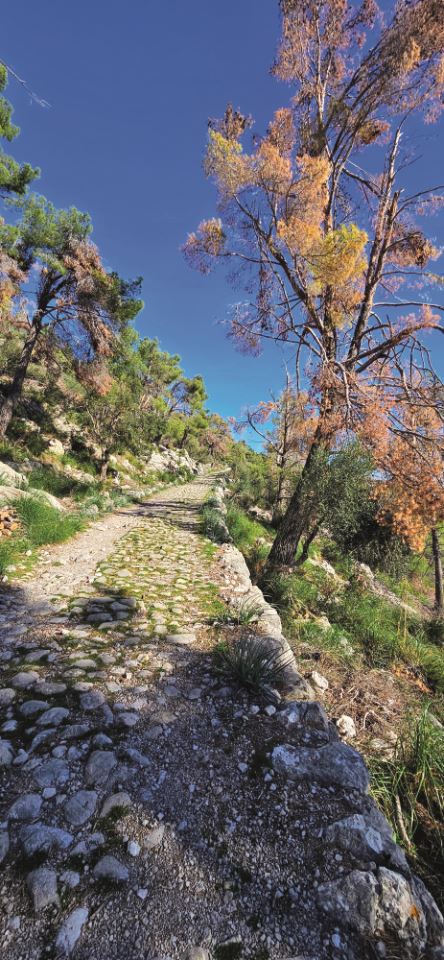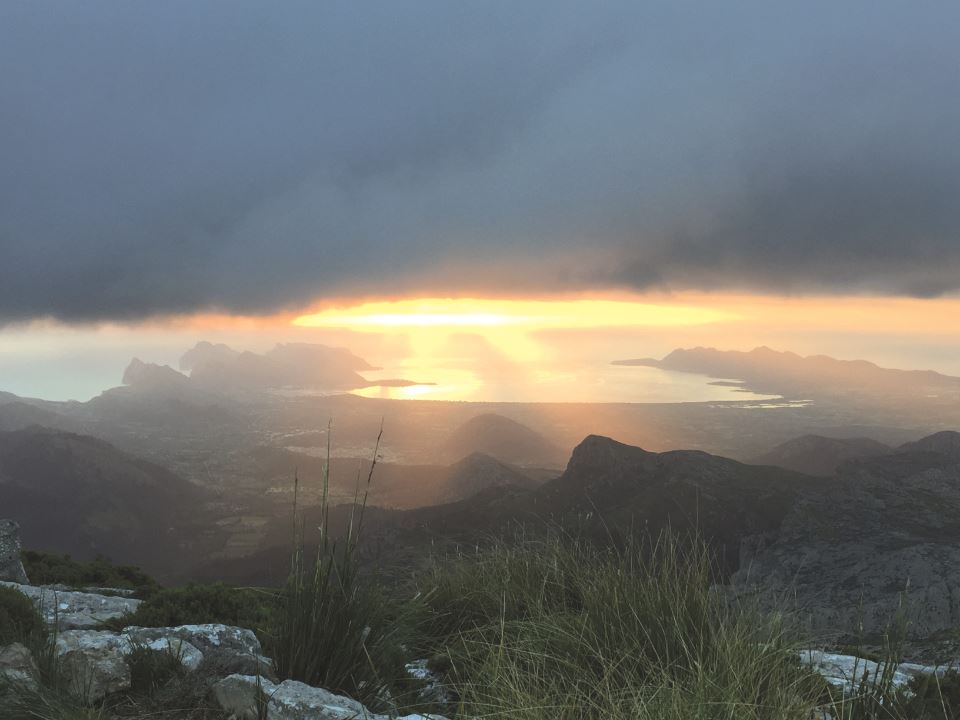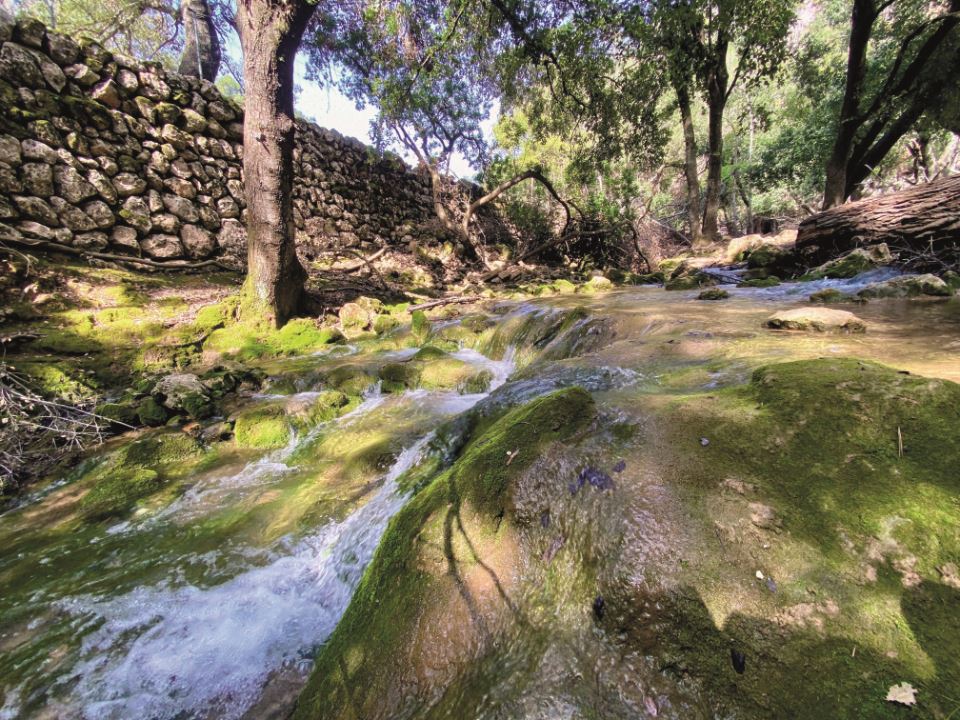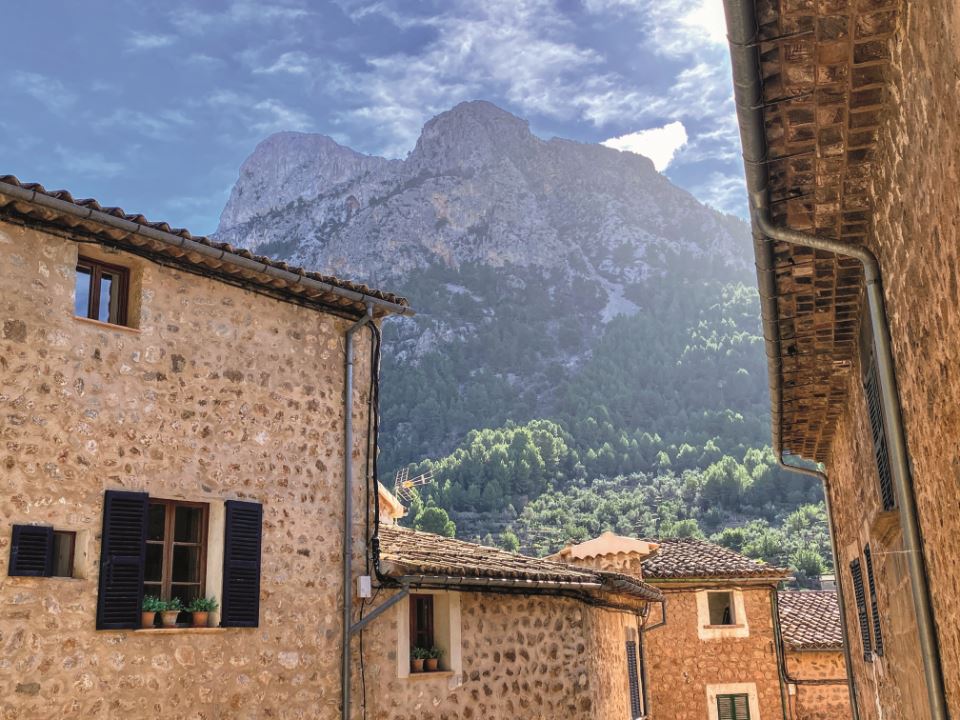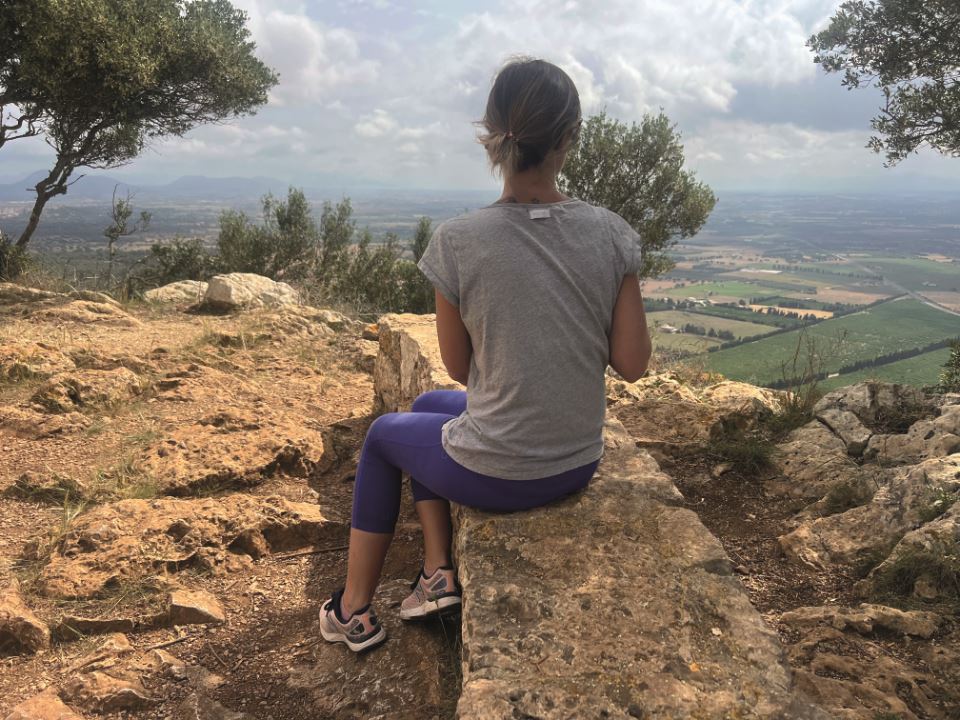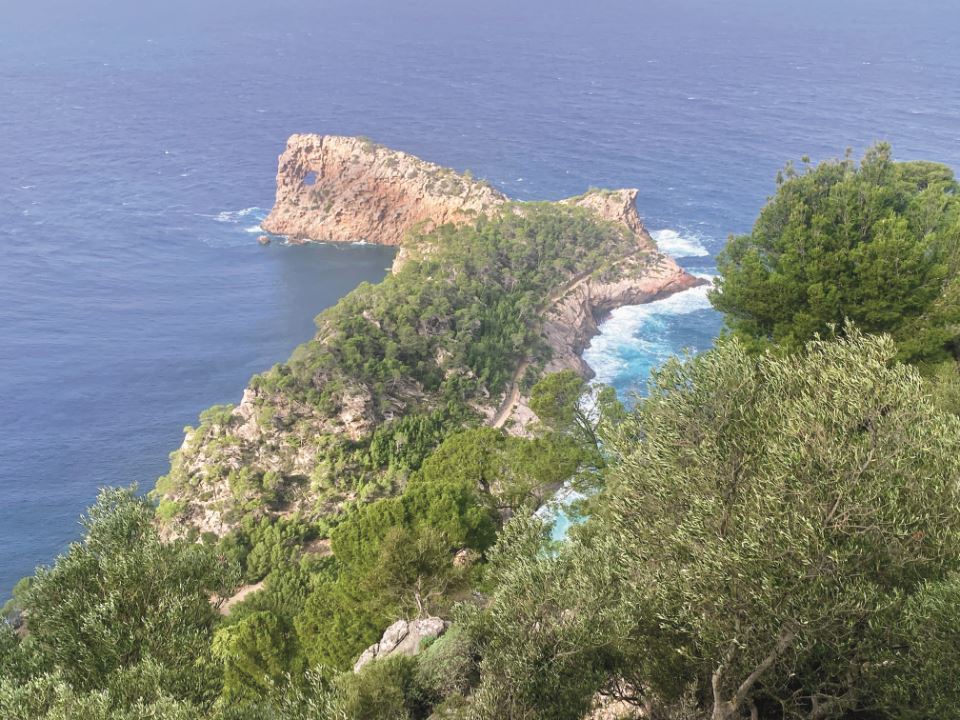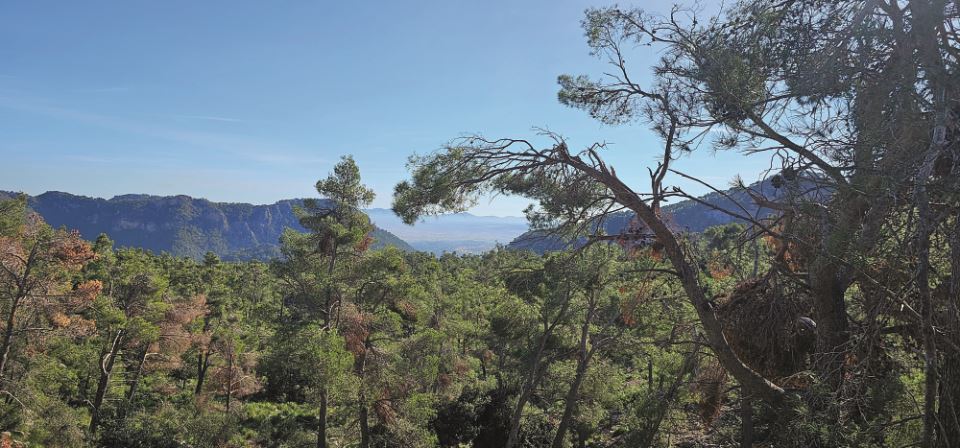Your Local Broker, Internationally
Berthon UK
(Lymington, Hampshire - UK)
Sue Grant
sue.grant@berthon.co.uk
0044 (0)1590 679 222
Berthon Scandinavia
(Henån, Sweden)
Magnus Kullberg
magnus.kullberg@berthonscandinavia.se
0046 304 694 000
Berthon Spain
(Palma de Mallorca, Spain)
Simon Turner
simon.turner@berthoninternational.com
0034 639 701 234
Berthon USA
(Rhode Island, USA)
Jennifer Stewart
jennifer.stewart@berthonusa.com
001 401 846 8404
Hiking The Serra De Tramuntana
By Rowan Fairbrass, berthonspain.com
Looking down on the Santuari de Lluc from the Son Amer mountain refuge, you can see why it is an important place. Nestled in the heart of the Serra de Tramuntana, surrounded by rocky outcrops and the wild garrigue of the Mediterranean, one can understand why the charm of the site has perpetuated through the ages as one for relaxation, tranquillity and quiet contemplation.
Lluc is a popular destination for holiday makers as well as local Mallorquins. It is a place of special cultural importance to the people of Mallorca. Legend tells of a mysterious statue of the Virgin Mary appearing on this site in the 13th century, as if from nowhere. Discovered by a young Moorish shepherd and taken to the village chapel, it mysteriously vanished from the chapel and reappeared in the location it was first found. This miracle prompted the local villagers to erect a new chapel on the site, which is now known as the Santuari de Santa Maria de Lluc.
Expanding from the original structure, the Santuari de Lluc is now a small complex including cafes, restaurants, bakery, chemist and souvenir shop. There is a small museum with collections showcasing Mallorcan culture and history, and a botanical garden with over 200 species of local flora.
This enclave of Mallorca is a treasure trove for hikers. The popular GR221 trail, also known as the Ruta de Pedra en Sec or Drystone Route, runs directly through Lluc. The trail is a network of ancient footpaths, opened in 2011 after years of planning and construction by the Conselleria de Mallorca. Spanning the length of the island, from Port Andratx in the southwest to Port de Pollença in the far north, it runs for approximately 135 kilometres. With the starting point at sea level, the trail passes numerous peaks throughout the Serra de Tramuntana, where the highest peak, Puig Major, stands at an altitude of 1,445 metres above sea level. Because of a military installation on the summit of Puig Major, the highest point one can reach on the path is somewhat limited, and in reality, the highest altitude on the GR221 route is around 1,090 metres, at the Coll de L’Ofre. This does not diminish the stunning scenery that can be found along the way; the rugged beauty of the mountains, the picturesque villages, the historic terraced hillsides where century old olive trees grow and the dramatic limestone cliffs drop down to the Mediterranean Sea.
To the north of Lluc lies the peak of Puig Roig at 1,003m, and to the south west, the limestone pinnacle of Puig de Massanella at 1,365 metres, and beyond that two of the island’s most important resources – Gorg Blau and Cúber.
Nestled in the slopes of Puig Major, these two artificial reservoirs collect the water that naturally drains through the Gorg Blau Torrent and provides drinking water to the city of Palma and the surrounding metropolitan area.
The Dry Stone Route is, of course, not the only walking track to be found in the mountains. I recently explored one such trail, following a well-trodden path from Caimari to Lluc, with an old friend visiting the island. Along the way we stopped to read our guidebook, which provided the names of the places we were passing and the wonderful history surrounding them. The route itself, Cami Vell de Lluc (translated as The Old Path To Lluc) is documented as far back as the 13th century and is believed to have been part of the road network built during the Moorish occupation of Mallorca, connecting agricultural centres with markets and trade.
The layers of history that make up the island of Mallorca mean that place names are influenced by various cultures and languages – Latin from its Roman occupants, Arabic from its Moorish period and Catalan after the conquest by James I of Aragon, all adding to the rich cultural heritage. Some of these have been passed down orally through the centuries, there are those names that are a very literal explanation of the physical landscape, and others that are a fascinating blend of history and fiction.
For example, the name Ses Rotes de Caimari, the area around Caimari that we see now as terraced olive groves, stems back to the 19th century when a sudden rise in the island’s population required land that was previously forest and shrubland to be broken up to be cultivated. The Catalan word Roturar, to break up the land, became rota – the broken land around Caimari.
There is a Bretxa Vella (the old gap) as well as a Bretxa Nova (the new gap). A mountain pass named Coll de sa Batalla, so named after a battle between 17th century bandits and the forces of justice.
I very much enjoy the stories and legends associated with place names, and the imagery they create, like Es Pedrolí del Gegant – a towering, rounded rock formation on the side of the footpath, said to have been a pebble shaken out of the shoe of a passing giant! Many others follow the theme of the historic pilgrimage for which this area is so famous.
Sa Filosa de la Mare de Déu is the name given to a jagged, rocky outcrop amongst the karst limestone. Legend tells us how the Virgin Mary (Mare de Déu) would sit in this spot and spin yarn by hand, running to hide in the caves whenever she heard pilgrims on the path. One time she ran away so fast she left her spindle and distaff – sa filosa, upright, as it was. Upon returning to the place, she found her spindle gone and this large rock formation in its place.
And as our guide book told us “…and if you don’t believe it, you had better go see for yourselves…”
Read Another Article
Download The Berthon Book 2024-2025 XX (28.2MB)

